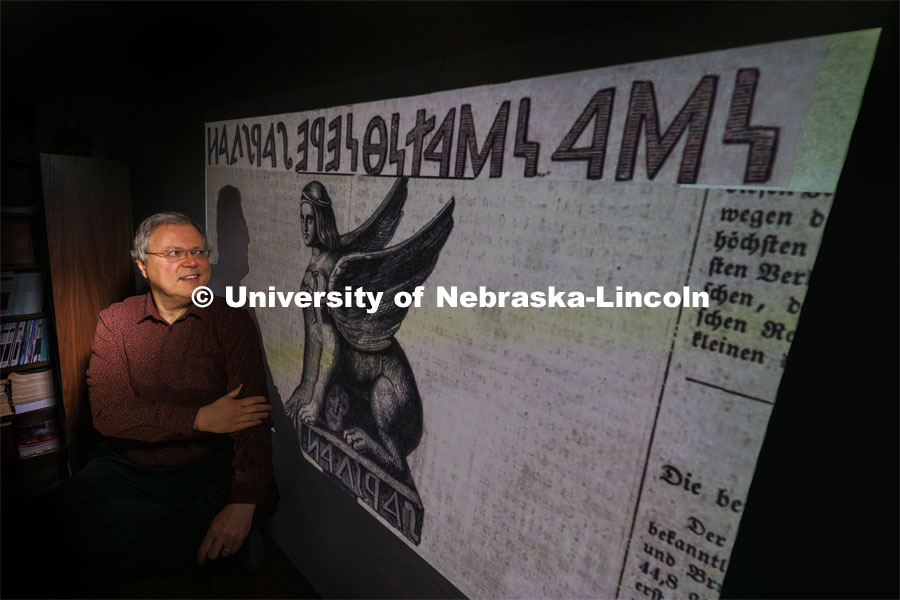
Title:
240123 Revesz 134 (permalink)
Order Instructions:
To order this photo, send Craig Chandler an email and include the text '240123 Revesz 134'.
Caption:
Peter Revesz poses in front of artwork of a small sphinx artifact and the inscription around its base. Revesz, a professor in the School of Computing with a courtesy appointment in the Department of Classics and Religious Studies, recently deciphered the description, which reads, “Lo, behold, worship! Here is the holy lion!” He recently published a research article in the Mediterranean Archaeology and Archaeometry Journal in which he figured out what a 20-letter inscription meant on a small sphinx artifact believed to date back to the northeastern part of the Roman Empire, in present-day Romania, between 106 and 270 A.D. The artifact, a small bronze statue of a winged lion with a female face, was part of the collection of Count Kemény but was lost after his estate was looted in the War of Independence of 1848-49. Professor Revesz’ analysis was based on a detailed drawing of the object that appeared in a German newspaper in 1847. Basically no one has been able to figure out what it said for at least 200 years. January 23, 2024. Photo by Craig Chandler / University Communication and Marketing.
Copyright:
© 2024, The Board of Regents of the University of Nebraska. All rights reserved.